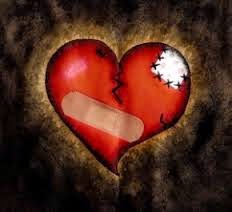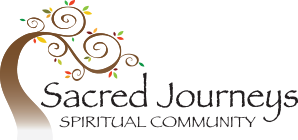
Intention: Healing Your Life
So, I do believe that the deepest, most profound healing we can experience is that of healing our hearts and souls.
Over the course of the last few weeks we’ve talked about intentionally staying in aliveness, intentionally making mistakes and having courage, intentionally seeking authenticity, and intentionally maintaining balance. All of these things are more easily achieved if we have also been aware of the wounds we carry and are making an intentional effort to heal them.
I chose this healing story from the gospel of Mark (8:22-26) because it is very easy to use it metaphorically thereby engaging it in a deeper way that speaks to this process of intentionally seeking healing.
When they arrived at Bethsaida, some people brought a blind villager and begged Jesus for a healing. Jesus led the blind person by the hand to the outskirts of the village. When he had spat on the person’s eyes and laid hands on them, Jesus asked, “Do you see anything?”
The blind one answered, “I see people, but they look like trees walking around.”
Then Jesus laid hands on the eyes a second time, and the villager was restored to clear and distinct sight. Jesus sent the healed person home, warning, “Don’t even go into the village.”
Fleshing this out metaphorically we find a bling man seeking healing with the help of his friends. Being blind can also be understood as the inability to understand, the lack of perspective, the lack of clarity, the inability to “see” what is wrong, and the lack of awareness. Interestingly, Jesus leads him out of the village. Perhaps the person had a need to be away from the place, opinions, perspectives, and people who were making it hard to "see." Notice the first try at healing doesn't work, it takes more effort to bring clear and distinct sight back. And at the end of this passage Jesus tells him not to go back to the village, but to go home. True healing means we can’t go back to the way things were, nor do we want to. And going home could suggest returning to oneself.
Our own healing begins with the desire to be healed, the intention to seeking healing. To achieve that healing, sometimes we may need the help of friends, family, teachers, therapists support groups. It can take courage to ask, but as Kornfield said, “Wise spiritual practice requires that we actively address the pain and conflict of our life in order to come to inner integration and harmony.”
There are so many things we might need help healing from: trauma, abuse (mental, emotional and spiritual), death and loss, a mistake we made, shame, guilt, anger, not feeling good enough, comments people have said that we hang on to, and the list goes on.
How might we know if we have things that need our attention to be healed? First, we need to pay attention to things that trigger us, that set off a disproportionate response. If my partner comments that the laundry needs to be done (not even that I need to do it) and I go off on a tirade, there is probably something else going on with me.
I also have sort of a litmus test for myself and things that have hurt me. If I can touch it, talk about it, and hear about it, and it doesn’t hurt, then I know I'm healing pretty well (of course, this doesn’t mean it won’t need more healing in the future!)
Often people believe that the spiritual path will simply disintegrate all their burdens, baggage and traumas. It's a misconception that if we pray enough, or meditation enough, or go to church every Sunday, or whatever the magic formula is, that we'll find healing. But it just isn't that easy. We have to do the work.
Jack Kornfield, in a Path with Heart, tells this story. “One man I knew practiced as a yogi in India for ten years. He had come to India after a divorce, and when he left his home in England, he was depressed and unhappy in his work as well. As a yogi he did years of deep and strict breath practices that led to long periods of peace and light in his mind. These were healing in a certain way. But, later, his loneliness returned, and he found himself drawn back home, only to discover that the unfinished issues that had ended his marriage, made him unhappy in his work, and worst of all, contributed to his depression, all arose again as strong as before he had left. After some time, he saw that a deep healing of his heart was necessary. He realized he could not run from himself and began to seek a healing in the midst of his life. So, he found a teacher who wisely guided him to include his depression and loneliness in his meditation. He sought a reconciliation (though not remarriage) with his former wife. He joined support groups that could help him to understand his childhood; he found communal work with people he liked. Each of these became part of the long process of healing his heart that had only begun in India.
We can't run away from our wounds. To heal we need to work through things, not ignore them and pretend they’ll go away. They say time heals all wounds, and time often helps, but more often than not we have to put in the effort to heal, and we may need help, too.
Rachel Remen, a psychologist who works with people with life-threatening illnesses, tells a story about a patient of hers, named Ana, who was about to begin a year of chemotherapy for ovarian cancer. Ana began their first session by saying that she was a “bad” person, hard, uncaring, selfish, and unloving. She delivered this line with “enormous poise and certainty.
In a voice filled with shame, Ana began to tell her that she had no heart, and that her phenomenal success in business was a direct result of this ruthlessness. Most important, she felt that it was not possible for her to become well, as she had earned her cancer through her behavior. She questioned why she had even come seeking help.
It took Ana eight months to tell her story. She had come to the United States at ten years old, an orphan. She had been adopted by a good family who knew little about her past, but had helped her build a life for herself.
In a voice Rachel could barely hear, she began to speak of her experiences as a child in Vietnam during the war. She began with the death of her parents. She had been four years old the morning the Cong had come, small enough to hide in the wooden box that held the rice in the kitchen. The soldiers had not found her there. When she finally emerged from her hiding spot, everyone in her family had been beheaded.
She continued on. It had been a time of brutality, a world without mercy. She was alone. She had starved. She had been brutalized. Hesitantly at first and then with growing openness, she told story after story. She had become part of a pack of children. She had stolen, she had betrayed, she had hated, she had helped kill. She had seen and done things beyond imagination.
Weeks went by and she continued to tell the stories and Rachel continued to listen. She was her first witness to the pain, violence, fear and shame Ana had lived through.
Over and over she would talk of what a bad person she was. Over and over she would cry out, “I have such darkness in me.”
Gradually Ana began to talk of more recent events: her ruthless business practices, how she used others, always serving her own self-interest. She began to talk about her contempt, her anger, her unkindness, her distrust of people, her competitiveness. To Rachel it seemed that she was completely alone. Nothing had really changed, her whole life was organized around her survival.
One day, she walked in and said, “I have no more stories to tell.”
“Is it a relief?” Rachel asked.
“No, it feels empty. I am afraid I will not know how to survive now. But I could never forget.”
A few weeks later she brought in a dream, one of the first she could remember. In the dream she had been looking in a mirror, seeing herself reflected there to the waist. It seemed to her that she could see through her clothes, through her skin, through to the very depths of her being. She saw that she was filled with darkness and felt a familiar shame, as intense as that she had felt on the first day she had come to Rachel's office. Yet she could not look away. Then it seemed to her as if she were moving, as if she had passed through into the mirror, into her own image, and was moving deeper and deeper into her darkness. She went forward blindly for a long time. Then, just as she was certain that there was no end, no bottom, that surely this would go on and on, she seemed to see a tiny spot far ahead. As she moved closer to it, she was able to recognize what it was. It was a rose. A single, perfect rosebud on a long stem.
For the first time in eight months she began to cry softly, without pain. “It’s very beautiful,” she said, “I can see it very clearly, the stem with its leaves and its thorns. It is just beginning to open. And its color is indescribable: the softest, most tender, most exquisite shade of pink.”
Rachel asked what this dream meant to her.
“It’s mine,” she said. “It is still there. All this time it is still there It has waited for me to come back for it.”
The rose is the oldest archetypal symbol for the heart. It appears in both the Christian and Hindu traditions and many fairy tales (Beauty and the Beast). It presented itself now to Ana, even though she knew of none of these stories. She had held her darkness close, used it as her protection and defined herself through it. Now, finally, she had been able to remember. Her heart, her soul, was still safe, deep beneath all the layers of pain, hurt, anger and suffering. And now that she had begun to shed those layers, it was starting to bloom.
Underneath all that life and society and circumstances have placed on us, we are whole, we are complete, we are light, we are love, and we are one with the Sacred Presence. May we intentionally and with awareness, seek our own healing, uncovering more and more of the beautiful beings we are.
Love & Light!
Kaye



